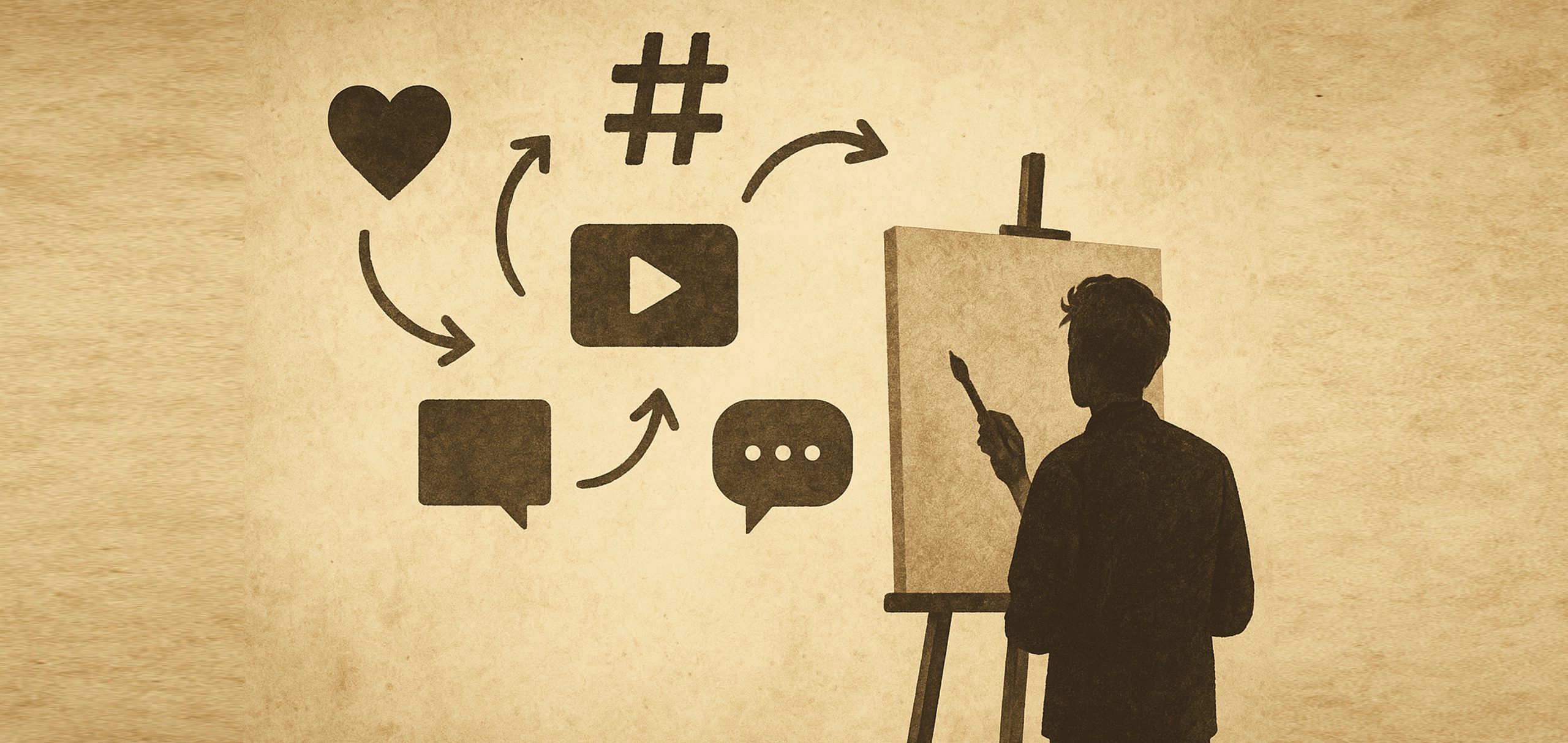““We have to continually be jumping off cliffs and developing our wings on the way down” –Kurt Vonnegut
The Creator’s Paradox
In a world where visibility is currency, how do artists stay seen without selling themselves short?
To create is to bare something of yourself. To brand yourself is to shape how the world sees it. And in 2025, that act of shaping of being seen is no longer optional.
Every artist is now a marketer. Every moment, a potential post. The brushstroke, the sketch, the first draft all quietly ask: “Will this get traction?”
But how do you stay visible without becoming a product? How do you build a name without betraying the very thing that made you worth noticing? That’s the creator’s paradox. And it’s more common than most admit.
The Spark Before the Metrics
Most creators don’t start with strategy. They begin with a feeling vague, urgent, often impractical. A line in the dark. A color that won’t leave. Something personal that wants out.
Van Gogh painted because he had to. Maya Angelou wrote to reclaim voice. There was no content calendar. No audience feedback loop. Just work. And a pulse. Today, even that origin story is optimized. The moment inspiration strikes, it’s turned into a Reel. A tweet. A hook. Visibility devours spontaneity. And still without visibility, the work is ignored.
Why Branding Still Matters
Let’s be honest: branding isn’t evil. It’s essential.
A clear voice, a distinct aesthetic, and a recognizable rhythm help people find you, remember you, trust you. Brandon Stanton didn’t just take portraits he created ‘Humans of New York’. That’s not selling out. That’s alignment. A good brand doesn’t trap you. It gives your creativity a recognizable doorway.
But it can’t come at the cost of your voice. Because when the voice bends too far to fit the trend, the echo sounds hollow.
When the Work Starts to Disappear
Here’s where it turns.
You start working for the audience, not with them. You create what performs, not what matters.
You chase reach, not resonance. And slowly, the thing that made you a creator that strange, sacred inner compass gets quieter. Then exhausted. Then gone.
This isn’t burnout. This is erosion. You’re still producing. But less of it feels like you.
How to Protect What’s Yours
You protect your soul by creating things no one sees. By writing drafts that stay in the drawer.
By making not for the grid but for the joy.
Set boundaries. Schedule silence. Learn to distinguish between attention and affection. Share selectively. Keep something sacred. Your worth is not your follower count. Your value is not your velocity. Don’t confuse the noise of reaction with the depth of connection.
Connection Over Performance
What audiences crave isn’t perfection it’s presence. The behind-the-scenes. The odd details. The work in progress. You’re not a brand mascot. You’re a human making something honest.
Let them in. Not all the way, not all the time just enough to remind them that the thing you’re making isn’t content. It’s a conversation.
The Paradox Is the Point
You’ll never escape this tension. And maybe that’s the point. Art is the dance between expression and exposure. Between hiding and being seen. Your job isn’t to balance perfectly. It’s to navigate with grace to build something lasting without sanding off your edges. Be clear. Be visible. But most of all, be true. The soul isn’t a trade-off. It’s the reason you started. And if you must build a brand, let it be one with breath still in it.
Conclusion
Don’t brand yourself to death. Build something worth being found for.
You cannot build a brand and remain untouched. But you can remain undiminished. The creator’s paradox isn’t a problem to be solved it’s a terrain to be navigated. With discernment. With distance. And occasionally, with defiance. Because while the world wants your polish, it’s your pulse that will make them stay.



